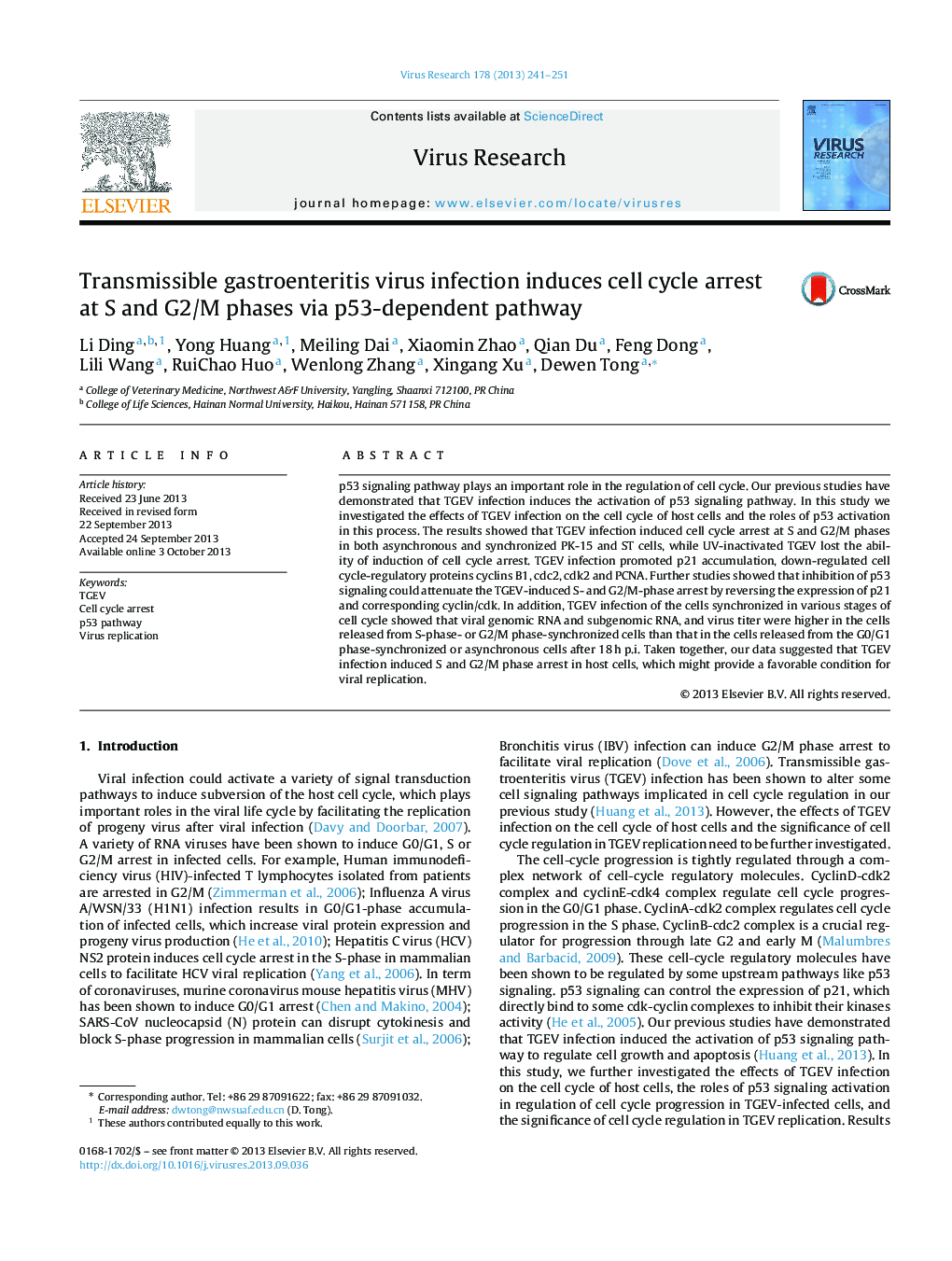| Article ID | Journal | Published Year | Pages | File Type |
|---|---|---|---|---|
| 6142666 | Virus Research | 2013 | 11 Pages |
â¢TGEV induced cell cycle arrest at S and G2/M phase in PK-15 and ST cells.â¢p53 might play key roles in mediation of TGEV-induced cell cycle arrest.â¢The host cells staying at S or G2/M phase is beneficial for TGEV replication.
p53 signaling pathway plays an important role in the regulation of cell cycle. Our previous studies have demonstrated that TGEV infection induces the activation of p53 signaling pathway. In this study we investigated the effects of TGEV infection on the cell cycle of host cells and the roles of p53 activation in this process. The results showed that TGEV infection induced cell cycle arrest at S and G2/M phases in both asynchronous and synchronized PK-15 and ST cells, while UV-inactivated TGEV lost the ability of induction of cell cycle arrest. TGEV infection promoted p21 accumulation, down-regulated cell cycle-regulatory proteins cyclins B1, cdc2, cdk2 and PCNA. Further studies showed that inhibition of p53 signaling could attenuate the TGEV-induced S- and G2/M-phase arrest by reversing the expression of p21 and corresponding cyclin/cdk. In addition, TGEV infection of the cells synchronized in various stages of cell cycle showed that viral genomic RNA and subgenomic RNA, and virus titer were higher in the cells released from S-phase- or G2/M phase-synchronized cells than that in the cells released from the G0/G1 phase-synchronized or asynchronous cells after 18Â h p.i. Taken together, our data suggested that TGEV infection induced S and G2/M phase arrest in host cells, which might provide a favorable condition for viral replication.
